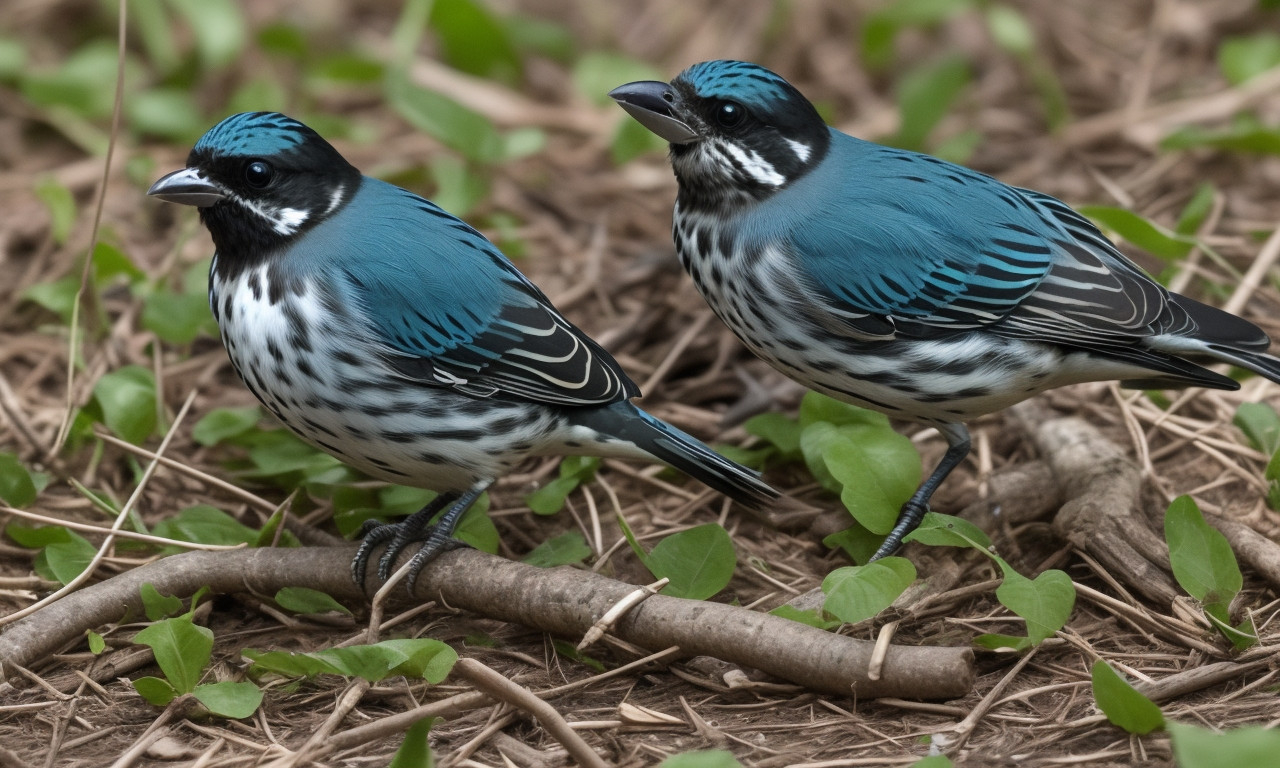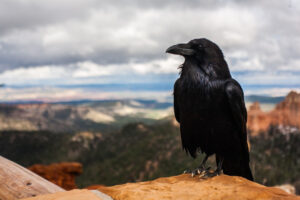Venturing into the vast expanses of our woodlands, one may encounter a creature as crafty as it is enchanting—the Camp Robber Bird. This delightful avian, with its curious behavior and remarkable adaptability, is more than just a winged marvel; it encapsulates the very essence of nature’s resourcefulness. Within this narrative, we unfold the layers that compose the mystique of the Camp Robber Bird, a bird that charms and bewilders with equal measure.
The Camp Robber is no ordinary bird; it is a talebearer of the forest’s secrets and a master of survival. As we delve into the world of this feathered treasure, we’ll unravel the habits, habitat, and unique quirks that render it an object of fascination for birders and nature enthusiasts alike.
Unmasking the Camp Robber: An Overview
Before we spiral into the depths of our avian subject’s lifestyle and environment, let us first acquaint ourselves with its identity. Often referred to as a Camp Robber, this bird is known for its bold strategies of claiming food, a behavior that has intrigued and delighted those who have crossed paths with it.
Related article; Black Palm Cockatoo
Identification and Species Recognition
The Camp Robber is commonly associated with the Gray Jay or Canada Jay (Perisoreus canadensis), a member of the crow and jay family (Corvidae). Notably recognized by its plush, silvery gray plumage, and stout stature, the Gray Jay possesses a charming appearance that belies its tenacious character.
Related article; The Most Amazing Birds in Virginia!
Physical Attributes
- Plumage: Soft, gray upper parts and lighter underparts.
- Size: Medium-sized bird, relatively smaller than its crow relatives.
- Eyes: Intelligent, inquisitive gaze that captivates onlookers.
Understanding the subtleties in the bird’s appearance aids in appreciating its adaptability to its surroundings, a trait undoubtedly intertwined with its foraging tactics.
Related article; Amazing Green Birds
Habitat: The Kingdom of the Camp Robber
The preferred realms for the Camp Robber span across North America’s boreal forests and mountainous regions. These territories offer a rich tapestry of coniferous trees and a serene backdrop for the bird’s activities.
Related article; huitlacoche bird habitat
- Forests: Primarily in coniferous woods, flourishing within spruce, pine, and fir trees.
- Altitudes: Higher elevations, though they can also be found at lower levels depending on food availability and climate.
The strategic choice of habitat places the Camp Robber in optimal positions to exhibit its foraging behaviors and interact with those who venture into their domain.
Related article; texas roadhouse early bird menu
The Foraging Finesse of the Camp Robber Bird
At the heart of the Camp Robber’s persona is its uncanny ability to seek out and secure food sources with an almost mischievous ingenuity.
Related article; bird bucks white owl
Ingenious Feeding Strategies
- Opportunistic Feeding: The Camp Robber is known for its willingness to take advantage of various food sources, a testament to its versatility.
- Observant Scavengers: It keeps a vigilant watch for unattended campsites and picnic areas, swooping down to claim leftovers or unguarded provisions.
It’s this aspect of its personality that lends the Gray Jay its nickname, Camp Robber; a title earned through its daring raids and cunning resource allocation.
Related article; Where to buy tweety bird ice cream in the USA
Food Storage: Preparing for Leaner Times
The Camp Robber’s intelligence extends to its foresight in food storage. Stashing away sustenance for harsher conditions is a prime example of its resourcefulness.
Related article; prefix that means bird
- Hidden Caches: Concealed food supplies tucked away in bark crevices or under lichens.
- Remarkable Memory: An impressive recollection of its numerous stash locations is crucial for its survival in winter months.
Interactions with Humans
The Gray Jay’s proclivity for human company can result in some of the most unexpected and delightful wildlife encounters.
- Curiosity Towards People: Often approaching hikers and campers with a relaxed demeanor, anticipating possible food rewards.
- Boldness in Foraging: Not uncommon for these birds to attempt to take food directly from human hands, displaying an extraordinary level of daring.
While their interactions with humans can be amusing, it’s important to acknowledge the potential impact of such behaviors on their natural foraging instincts and diet.
The Significance of the Camp Robber Bird in Ecosystems
The Camp Robber Bird is not merely a charismatic charmer; its role in nature is more consequential than its cheeky name would suggest.
Seed Dispersal and Forest Health
Through its caching behavior, the Camp Robber inadvertently aids in the dispersal of seeds, contributing to the health and diversity of the forest.
- Accidental Planting: Forgotten food caches can yield new plant growth.
- Nutrient Distribution: Their wide-ranging diet helps in distributing nutrients across different parts of the forest.
Predator and Prey Dynamics
As part of the food chain, the Gray Jay fits into the complex dynamics of predator-prey relationships within its habitat. Its presence indicates a balanced ecosystem, a sign of a thriving natural environment.
The Conservation Concerns for the Camp Robber
Despite their seemingly abundant populations, Gray Jays, like many species, face challenges that imperil their future.
Habitat Loss and Climate Change
- Effects of Logging: Deforestation for timber and development disrupts the delicate balance of their ecosystem.
- Warming Temperatures: Climatic shifts can alter the availability of food sources and suitable breeding conditions.
Capturing the Camp Robber Bird: Photography and Observation Tips
For those inspired to seek out and immortalize the essence of the Camp Robber Bird, a few strategically applied guidelines can enhance the experience.
Best Practices for Birdwatchers
Timing and Season
Early morning excursions during breeding seasons can yield the highest chances of sightings, as the birds are actively foraging and tending to their young.
Equipment Essentials
The Right Gear for the Right Shot
A sturdy pair of binoculars and a high-quality camera with a telephoto lens are vital for capturing those elusive moments.
Ethical Engagement with Wildlife
Always maintain a respectful distance and avoid disrupting the natural behaviors of the Camp Robber Bird. Feeding wildlife, particularly human food, is generally discouraged as it can harm their health and alter natural feeding habits.
The Allure of the Camp Robber: Understanding Through Stories
There is an immeasurable value in sharing tales of encounters with these beguiling birds. Stories of their boldness, intelligence, and resiliency enrich our understanding of them and the wider natural world.
Anecdotes from the Wild
- Close Encounters: Recollections of those surprise moments when a Gray Jay decides to join a picnic or investigate a newcomer to their woods.
The Camp Robber Bird as a Symbol
To many, the Camp Robber represents the spirit of the wild; an unquenchable curiosity and an indefatigable zest for life.
In Conclusion: The Enigma of the Camp Robber Bird
The Camp Robber Bird stands as a testament to the adaptability and cunning of avian species. Whether it’s known as the Gray Jay, Canada Jay, or by its more whimsical moniker, this bird never ceases to capture our imaginations. Through understanding its habits and appreciating its place in the ecosystem, we come a step closer to unveiling the mystique of nature’s craftiest forager.




